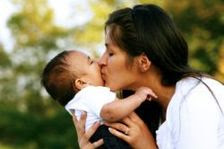
Funding Opportunities
Health Workforce
Behavioral Health Workforce Education and Training (BHWET) Program - Apply by June 12
HIV/AIDS
Optimizing Momentum Toward Sustainable Epidemic Control - Apply by June 12
Improving HIV Health Outcomes through the Coordination of Supportive Employment and Housing Services — Demonstration Sites - Apply by July 24
Improving HIV Health Outcomes through the Coordination of Supportive Employment and Housing Services – Evaluation and Technical Assistance Provider - Apply by July 24
Maternal & Child Health
Health Professional Support Program for Children with Congenital Zika Virus (ZIKV) Infection - Apply by June 12
Maternal and Child Health Services - Apply by July 17
Primary Health Care/Health Centers
Service Area Competition - Additional Area (SAC-AA) - Henderson, Nevada - Apply by June 26
Healthcare Systems
Poison Center Network Service Area Competition - Apply by July 14
Office of the Administrator
National Organizations for State and Local Officials (NOSLO) - Apply by June 12
President’s Budget
 |
On May 23, the President submitted his FY 2018 Proposed Budget to the Congress. For information on HRSA's budget requests, please visit:
|
HRSA Awards $1.3 million for the Home Visiting Research and Development Platform

On May 28, HRSA awarded $1.3 million to Johns Hopkins University to support a cooperative agreement for the Home Visiting Research and Development (R&D) Platform. This funding supports innovative home visiting research that will significantly extend the evidence-base of home visiting.
The Maternal, Infant, and Early Childhood Home Visiting Program responds to the diverse needs of children and families in at-risk communities. The goal of the Home Visiting R&D Platform is to develop and sustain a network of early childhood development and learning researchers and practitioners who will implement and report on innovative, transdisciplinary research related to precision interventions to improve outcomes for at-risk families and communities.
|
HRSA Grantee wins Rural Health program award

The North Carolina – Rurally Engaging and Assisting Clients who are HIV positive and Homeless (NC- REACH) program has been named the National Rural Health Association’s Outstanding Rural Health Program for 2017.
NC-REACH is an innovative medical home model which focuses on HIV-positive homeless or unstably housed individuals co-diagnosed with a mental health or substance abuse disorder. The program helps to provide HIV primary care, behavioral health, housing and care coordination services. The program is one of the HRSA HIV/AIDS Bureau's Special Projects of National Significance (SPNS).
Learn more about NC-REACH (PDF - 222 KB).
|
Better behavioral health for rural kids

Parents of children living in rural America are more likely than urban dwellers to have financial problems, less access to health care and live in neighborhoods with poor housing conditions and fewer amenities. However, they are also more apt to feel secure in their social networks, a recent CDC publication finds.
Paradoxically, perhaps, that social interdependence also leaves them less inclined to disclose mental health issues or seek care – even as one in six children across rural America is estimated to have a behavioral health disorder.
|
Supplement provides updated info on Fragile X Syndrome (FXS)

A supplement on Fragile X Syndrome published in the journal Pediatrics today. One of the manuscripts, Public Health Literature Review of Fragile X Syndrome, provides a comprehensive review of the latest information about Fragile-X Syndrome. Another focuses on Fragile X-associated disorders. CDC scientists and research partners used the largest U.S. database on FXS to outline care and treatment information, including what FXS looks like in people who also have autism, in two of the articles published. Dr. Catharine Riley, Lead for Newborn Screening in HRSA’s Maternal and Child Health Bureau, formerly with CDC, is among the co-authors and co-editors of the supplement.
Fragile X Syndrome, a rare genetic disease, is the most commonly known cause of inherited intellectual disability. Today’s research is an important step forward in improving the health and well-being of people with the condition.
|
Collaborative program addresses health care barriers unique to young adults living with HIV

A new article published last week in the Journal of the American Medical Association Pediatrics highlights a multi-agency, collaborative demonstration program that addressed health care barriers unique to adolescents and young adults living with HIV, a study supported by HRSA, CDC, and NIH.
According to the article, the demonstration program sequentially implemented three protocols – The Strategic Multi-Site Initiative for the Identification, Linkage to, and Engagement in Care of Youth with Undiagnosed HIV Infection (SMILE), SMILE 2, and the Project for the Enhancement and Alignment of the Continuum of Care for HIV-Infected Youth – to increase the percentage of youths (ages 13-24 years) who remained in care.
Select Ryan White HIV/AIDS Program Part D sites collaborated with NIH Adolescent Medicine Trials Network for HIV/AIDS Interventions (ATN) sites and CDC-funded health departments to enable 75 percent of nearly 4,000 youths to be linked to care, with 88 percent remaining in care throughout the study at up to 24 sites across the United States. In contrast, at the national level, about 68 percent of youths diagnosed with HIV are linked to care, with only 55 percent remaining in care, according to CDC estimates.
|
Upcoming: Integrated Care web-based meeting

The HHS Federal Partners Integrated Care Meeting: “State of the Art: Research, Models, Promising Practices and Sustaining Integrated Care", will be held June 22 - 23. This two-day web-based meeting, co-sponsored by HRSA and SAMHSA, will highlight models of integrated care, key findings from the research community, examples of diverse grantee practices regarding service delivery, presentations by HHS agencies, and a wide range of resources to support efforts to build integrated systems of care.
|





















.jpg)









No hay comentarios:
Publicar un comentario